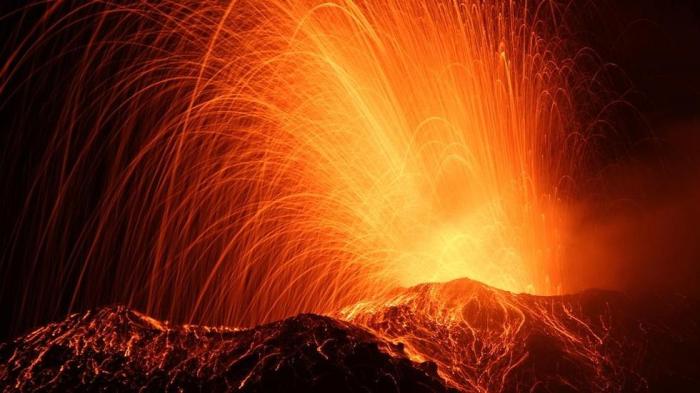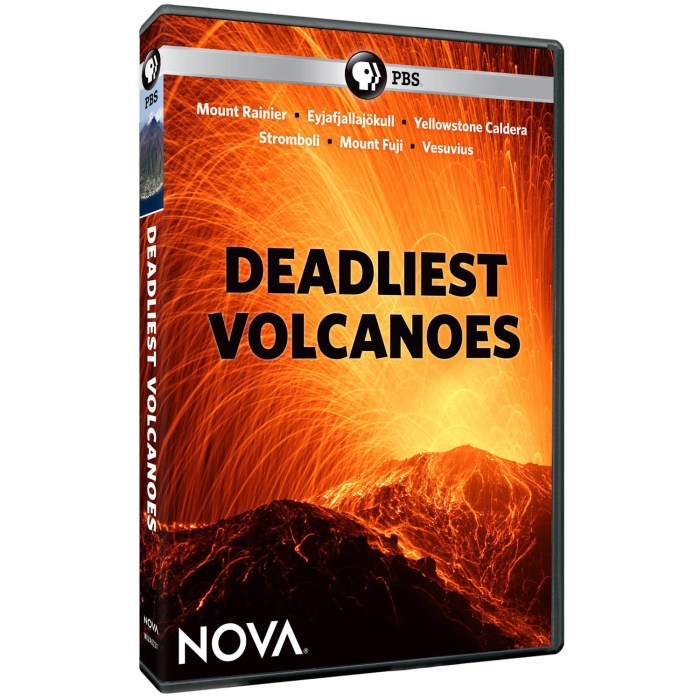Nova deadliest volcanoes video worksheet answers – Embark on a captivating journey with Nova’s Deadliest Volcanoes Video Worksheet Answers, a comprehensive resource that unravels the enigmatic world of volcanic eruptions, their associated hazards, and the crucial measures for risk mitigation. Delve into the depths of volcanic science, unraveling the mechanisms behind these awe-inspiring yet potentially devastating natural phenomena.
Volcanoes, with their towering presence and fiery eruptions, have shaped the Earth’s landscapes and influenced human history for millennia. Understanding their behavior and the risks they pose is paramount for safeguarding communities and minimizing the impact of volcanic disasters. This worksheet provides a comprehensive exploration of the deadliest volcanoes, their eruptions, and the strategies employed to mitigate their risks.
Introduction
Volcanic eruptions are a major natural hazard that can cause widespread devastation. The term “nova” refers to a sudden and dramatic increase in the brightness of a star. This phenomenon is often associated with the eruption of a white dwarf star, which can release an enormous amount of energy.
The most dangerous volcanoes in the world are typically located in subduction zones, where one tectonic plate is forced beneath another. These volcanoes can produce large and explosive eruptions that can devastate entire regions.
Volcanoes and their Eruptions

Types of Volcanoes
There are many different types of volcanoes, but they can be broadly classified into two main categories: stratovolcanoes and shield volcanoes. Stratovolcanoes are typically tall and conical, with steep sides and a central crater. They are composed of layers of lava and ash, and they can erupt violently, producing large amounts of ash and pumice.
Shield volcanoes, on the other hand, are broad and flat, with gently sloping sides. They are composed of lava flows, and they typically erupt less violently than stratovolcanoes.
Processes Involved in Volcanic Eruptions
Volcanic eruptions occur when magma, or molten rock, rises from deep within the Earth’s crust. As the magma rises, it can accumulate in a magma chamber beneath the surface. If the pressure in the magma chamber becomes too great, the magma will erupt through a vent in the Earth’s surface.
The type of eruption that occurs depends on the composition of the magma and the amount of gas it contains.
Notable Volcanic Eruptions
Some of the most notable volcanic eruptions in history include the eruption of Mount Vesuvius in 79 AD, which destroyed the Roman cities of Pompeii and Herculaneum; the eruption of Krakatoa in 1883, which caused a massive tsunami that killed over 36,000 people; and the eruption of Mount St.
Helens in 1980, which killed 57 people and caused widespread damage.
Volcanic Hazards

Lava Flows
Lava flows are one of the most dangerous hazards associated with volcanic eruptions. Lava is molten rock that can reach temperatures of up to 1,200 degrees Celsius. When lava flows out of a volcano, it can destroy everything in its path.
Lava flows can also block roads and rivers, and they can cause widespread flooding.
Ash Clouds
Ash clouds are another major hazard associated with volcanic eruptions. Ash clouds are composed of tiny particles of rock and glass that are ejected into the atmosphere during an eruption. Ash clouds can block out the sun, causing darkness and cooling temperatures.
Ash clouds can also cause respiratory problems, and they can damage crops and infrastructure.
Pyroclastic Flows
Pyroclastic flows are a type of volcanic eruption that occurs when a large amount of hot gas and ash is ejected from a volcano. Pyroclastic flows can travel at speeds of up to 700 kilometers per hour, and they can destroy everything in their path.
Pyroclastic flows are one of the most deadly hazards associated with volcanic eruptions.
Monitoring and Preparedness: Nova Deadliest Volcanoes Video Worksheet Answers

Monitoring Volcanic Activity
Volcanic activity can be monitored using a variety of methods, including seismometers, tiltmeters, and gas monitors. Seismometers measure ground movement, tiltmeters measure changes in the slope of the ground, and gas monitors measure the amount of gas being released from a volcano.
By monitoring volcanic activity, scientists can get a better idea of when an eruption is likely to occur.
Early Warning Systems and Evacuation Plans
Early warning systems are used to alert people of an impending volcanic eruption. These systems can be used to evacuate people from danger and to minimize the impact of the eruption. Evacuation plans are also important for ensuring that people know what to do in the event of an eruption.
Role of Technology in Volcanic Risk Management, Nova deadliest volcanoes video worksheet answers
Technology is playing an increasingly important role in volcanic risk management. Satellite imagery can be used to track the movement of lava flows and ash clouds, and computer models can be used to predict the likely path of an eruption.
This information can be used to evacuate people from danger and to minimize the impact of the eruption.
FAQs
What are the different types of volcanic eruptions?
Volcanic eruptions vary in their explosivity and characteristics. Some common types include effusive eruptions, characterized by gentle lava flows, and explosive eruptions, which produce ash clouds, pyroclastic flows, and other hazardous materials.
How do scientists monitor volcanic activity?
Volcanic activity is monitored using various techniques, including seismic monitoring, gas emissions analysis, and ground deformation measurements. These methods help scientists assess the likelihood and potential magnitude of an eruption.
What are the key factors that influence the severity of volcanic hazards?
The severity of volcanic hazards is influenced by factors such as the type of eruption, the volume and composition of erupted material, and the surrounding environment. Factors like population density and infrastructure development also play a role in determining the potential impact on human communities.
